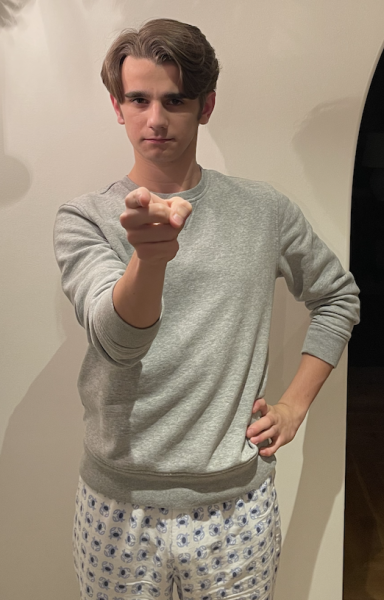It starts in an orphanage in Guadalajara, Mexico. Rather, an abandoned one that had been transformed into an art institute. As his cousins practiced their pirouettes and positions at a nearby ballet studio, muralist Carlos Rodriguez spent much of his early childhood waiting for them by wandering the halls of this local gallery. Yet, despite the great variety of colors, styles, and works he’d find there, Carlos couldn’t escape his fixation on a single artist and his pieces: José Orozco.
“At the time, I didn’t know who it was — I didn’t know who any of the great Mexican muralists were — but I knew I had to do this,” says Carlos, recalling the moments he first saw the murals. “I think it was because of their permanence. The murals, they opened conversations like paintings, but they’re fundamentally different because they’re a part of the structure. In other words, once the conversation is open, it won’t stop being there. Take Orozco’s portrayal of Cortez’s arrival: a robot body on a violent conquistador — he’s starting a conversation around imperialism, modernization, and their dangers that still goes on today … I wanted to open conversations like that too.”
Yet, perhaps even beyond the permanence of the pieces, Carlos felt inspired by the murals because of their distinctly Mexican themes and symbolism: “I could see myself in them, y’know? And when you’re young, that’s very powerful for you.”
Still, Carlos’ sense of self, of where he saw himself in the world, wouldn’t be so cut and dry forever. Specifically, when he was 10, his family migrated to San José, California for a life-saving operation for Carlos’ sister. Fortunately, the procedure was successful, and after receiving amnesty under Reagan’s 1986 policy, Carlos’s family decided to stay in San José.
New to the United States, Carlos recalls being the subject of extensive and daily discrimination, especially at the hands of those he thought to be a part of his community. “It’s almost like back then, you were expected to say ugly and derogatory things to others, and so I knew I wasn’t wanted there [in San José] because people told me every day,” he reflects. “But not even white people either; it was my own people, Brown people, who were telling me to go back to where I came from. … That was probably the hardest thing to deal with.”
As Carlos explains, his own community’s rejection of him left him grappling for identity throughout much of his young adult life — a struggle only compounded by trouble at home in the form of poverty, divorce, and a baffling new vocabulary used to describe him.
“I didn’t like all these new terms: Latinx, Hispanic, etc. I guess they were familiar concepts, but [these names] originate from people who aren’t our ancestors, from those who aren’t a part of our traditions or culture. … Those names … that’s a lot of diversity, cultures, and groups that are being generalized by a name. And so for me, what good do those broad labels serve to separate and divide by generalizing entire populations into one title that’s not theirs? Who is it easy for to call us that?”
Instead, Carlos’s response to this mounting confusion was to focus on his own individuality. He proudly rejected (and continues to reject) terms like Latinx or Hispanic, and in response, he considered how he could work to represent his distinct self tangibly — for both others’ and his own sake. The answer came back to what had provided him with purpose and identity early on: murals.
“So I think all of it has led me to what I do, but especially that part of my life,” Carlos comments. “The art I make really revolves around helping people not have these problems with identity and feeling present and most importantly at home: bringing culture in a way where other cultures understand it and appreciate it too.”
The art I make really revolves around helping people not have these problems with identity and feeling present and most importantly at home: bringing culture in a way where other cultures understand it and appreciate it too.
— Carlos Rodriguez
Nowhere is that mission for his murals more apparent than in Carlos’ choice of sites and creative process.
Notably, almost all of Carlos’ pieces have been painted at schools — ranging from pre-schools to Santa Clara University — or centers for children. However, no matter the location, the process Carlos uses to plan and execute the mural is the same.
It starts with sitting down with his clients — in many cases, kids — and asking them very explicitly about what makes them who they are. What would they want to see in a mural? What is special to them? In doing so, he ensures that every kid feels that they’re reflected in the mural’s symbolism.
“People hire me because they want their population to feel cared for, and they want them to feel present,” Carlos explains. “Typically there’s no visible culture in the schools I go to — that or it’s a specific but not inclusive culture — but they’re looking for something broader and more engaging for the students.”
Indeed, the engagement and inclusion associated with Carlos’ works come even before the murals are complete. By making his planning process so collaborative and diverse, Carlos says, he’s able to get even the quieter kids in class to jump in.
“And that’s when the magic happens,” adds Carlos excitedly. “When those quiet kids become leaders in the process, it gives a personal voice to those who have been silent or silenced … It shows me how the mural process, just like for Orozco, is opening up the door for new conversations … and for kids to be recognized by their classmates for how cool they are.”
When those quiet kids become leaders in the process, it gives a personal voice to those who have been silent or silenced … It shows me how the mural process, just like for Orozco, is opening up the door for new conversations
— Carlos Rodriguez
According to Carlos, it’s “magical” moments like that — moments where his art and its process give kids recognition and a stronger sense of their own identity — that drive him forward in his career.
As for joining Orozco and Rivera, perhaps his strongest influences, in the great annals of Mexican muralist history? Carlos has his thoughts about that too.
“Y’know, there was one point in my life where I wanted to be famous and I wanted my work to be in museums,” he concludes. “But then I asked myself, ‘Why is that going to happen? How?’ I found that it’s all about the life you lead … I don’t have to paint for identity: I could just paint whatever in the hopes of becoming famous. But I think there’s a real power and impact to my work, and I see it every day in the kids I’m painting for … At the end of the day, the murals will outlive me, outlive all of us, and the conversations [they create] will stay open. That’s what matters.”


